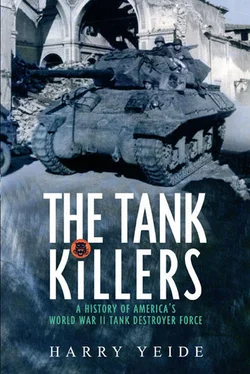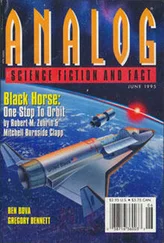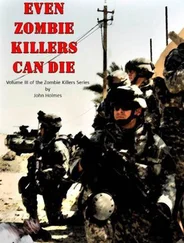* * *
The landings around Oran began as scheduled between 0100 and 0130 hours on 8 November and achieved complete surprise. 13The 1st Infantry Division cleared the way for Combat Command B to begin landing its men and tanks from Maracaibo transport ships (converted tankers). 14The Maracaibos required seven feet of draft, so pontoon bridges were constructed—a task requiring three hours—over which vehicles drove to shore. This was hardly a viable solution for any future assault landing under fire. 15
Lieutenant Robert Whitsit and his 3d Platoon, Company B, 701st Tank Destroyer Battalion, and Lt John Eggleton’s 2d Platoon from Company C disembarked at about 0600 hours in their respective landing areas. The remainder of both companies would unload at a frustratingly slow pace—one vehicle at a time ferried in landing craft—over the next two days. As corps assets began landing, Capt Michael Paulick and his recon men from the 601st clambered down rope nets from the deck of the SS Latita to small assault boats waiting below. Inexperienced and confronted with the slap-dash arrangement, many of them became entangled in the nets. 16Nevertheless, they were soon ashore.
The tankers of the 1st Armored Division de-waterproofed their vehicles. West of Oran, Task Force Green—built around one armored and one armored-infantry battalion from Combat Command B— deployed a small task force dubbed a flying column to spearhead the advance. The column set off from Merza bou Zedjar for Misshergin about 0900 hours. 17Lieutenant Eggleton’s tank destroyers took the point, an order completely at odds with tank destroyer doctrine. Racing down the highway between Oran and Sidi bel Abbes, the Americans came under fire from emplaced French 75mm guns. Sergeant Mitchell’s M3 crewmen replied with their own—a copy of the very guns firing on them—and destroyed two of the French weapons. The tank destroyer force’s first engagement had been a success but had nothing to do with fighting tanks. Doctrine was taking a beating, and it was not even noon yet.
On the other side of Oran, Task Force Red—built around two CCB armored and one armored-infantry battalions—advanced to Tafaraoui Airfield. Lieutenant Colonel John Waters, a son-in-law of Patton, commanded a second flying column that consisted of the platoon from the 701st Tank Destroyer Battalion, two light tank companies, and one company of armored infantry. As in Task Force Green, Lieutenant Whitsit’s M3 tank destroyers were put at the point.
About 1100 hours, the flying column reached the airfield. The arriving troops found no sign of the paratroopers from the 503d Parachute Infantry Regiment who were supposed to have landed there. The American forces quickly overcame light resistance and took three hundred prisoners. 18
The missing airborne unit, it transpired, had been thoroughly dispersed during the long flight from England, and several of the aircraft had set down in a dry lake bed near Oran. American tanks found the paratroopers, and Waters requested by radio that they relieve his command so that he could pursue the enemy. Lieutenant Colonel Edson Raff, commanding the airborne expedition, agreed. At 1400 hours the paratroopers and American-piloted Spitfire fighter aircraft that were to operate out of Tafaraoui were ordered to the airfield. As the C-47s carrying the paratroopers approached some fifteen miles from the landing strip, French fighters and bombers struck the American aircraft and the flying column. A 500-pound bomb demolished one of Lieutenant Whitsit’s M3s, wounding three enlisted men. The C-47s were forced down, and the airborne had to walk the rest of the way to Tafaraoui. 19
Shortly before sundown, Whitsit’s platoon engaged with long-range fire a mixed French battery of seven guns that had been shooting into the area of the airfield from the northeast. The French guns fell silent.
* * *
French aircraft and artillery again struck Tafaraoui the morning of 9 November. After Spitfires had driven off the enemy aircraft, Lt Whitsit’s platoon accompanied a company of light tanks southward to deal with a French tank concentration reportedly in the vicinity of St. Barbe du Tlelat. The American force engaged the French at a range in excess of two thousand yards. As the TDs laid down a base of fire, the American light tanks advanced in two V’s abreast, followed by a third V five hundred yards behind. The Americans destroyed fourteen Renault AMC35 light tanks armed with 47mm gun. Two were officially credited to the guns of the 701st Tank Destroyer Battalion; Lieutenant Colonel Waters later attributed all of the kills to the TDs, while one of the now bona fide tank killers suggested that an honest guess would be six. Waters commented, “It was a shame to shoot at these French tanks as we could almost see the shells go right through their thin armor. It gave our men lots of confidence.” 20
Task Force Green overran the La Sénia airfield the morning of 9 November and captured five hundred prisoners and ninety aircraft. At the beachhead, meanwhile, a new column under the command of Lieutenant Colonel Bruck was formed consisting of two medium tanks, five light tanks, and the M3s of Lt Arthur Edson’s 2d Platoon, Company B, 701st Tank Destroyer Battalion. Once again, the tank destroyers were put in the lead. After several changes in orders, the column—now less two M3s detached to provide security in La Mecta—was directed toward La Sénia. 21
As the day ended for the men in North Africa, thousands of miles to the rear the U.S. Army ordered the replacement of the light platoons in TD companies with heavy platoons. The decision did not affect the battalions already in action. Instead, they would fight with a now officially obsolete configuration. 22
Both B/701st platoons participated in Task Force Red’s capture of the town of La Sénia early on 10 November. Advancing from the south, they came under heavy sniping and artillery fire. One M3 in Lt Whitsit’s 3d Platoon was struck by a shell and demolished, and the battalion suffered its first five deaths in action.
Waters ordered his flying column to bypass La Sénia and charge into Oran, and 3d Platoon TDs maneuvered around the town. Bruck, however, ordered his command to continue into La Sénia. When resistance continued, he called his column back to follow Waters around the outskirts.
Lieutenant “Ace” Edson in the 2d Platoon command M3 did not receive the transmission because of the notoriously unreliable radio. Edson, a former civil engineer who had joined the army as a private and risen to sergeant before accepting a commission, was following a tank, which was hit at a roadblock and began to burn. Edson’s halftrack provided covering fire for the escaping crew but became stuck in the roadblock debris until the next vehicle in line pushed it free. Edson proceeded through the town under small-arms fire and out the other side. The brakes had been damaged by the roadblock, and the vehicle was smoking as it raced ahead. Edson suspected that the defenders thought he was already on fire.
Three miles down the road, Edson encountered a column of French trucks where drivers were standing in vineyards to the side of the road. As the halftrack barreled by the Frenchmen, someone in the vehicle yelled out, “Hey, Lieutenant, there’s nobody behind us!” Sure enough.
Edson ordered the driver to turn around and head back. As the halftrack raced by the French trucks again, it broke down near the end of the column. Edson decided he had better shoot at the enemy, which he did. The French drivers decided to surrender. Edson arranged for four French trucks to tow his halftrack and carry his fifty prisoners back to La Sénia, where he negotiated the surrender of another three hundred combatants. The French officers did not want to capitulate to a mere lieutenant, but Edson told them, “Well, we have contact with a general.” That sufficed to convince the officers to approach him one-by-one, salute, and surrender their pistols while the men stacked arms. 23
Читать дальше







